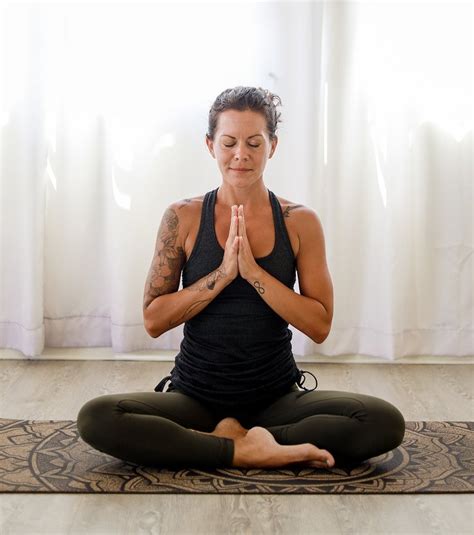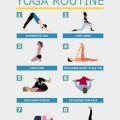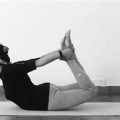Daily Yoga Breath Work Practice: A Comprehensive Guide to Optimizing Health and Mindfulness
Yoga breath work, or pranayama, is an essential element of yoga practice. It’s not just a tool for relaxation, but also a technique that enhances mental clarity, emotional balance, and physical health. In this comprehensive guide, we dive into the intricate world of daily yoga breath work, exploring its historical roots, current applications, and how you can implement it into your daily routine to maximize your well-being.
Introduction
Breathing is fundamental to life, yet many people underestimate its importance in their daily routine. Pranayama—the control and regulation of breath in yoga—has been used for centuries to align body, mind, and spirit. Today, it is increasingly recognized not just as a spiritual practice but as an accessible, scientifically supported technique for improving overall health. This guide will unravel how to establish a daily breath work practice, its historical significance, current scientific research, and practical applications in modern life.
Key Concepts
- Pranayama: The art and science of controlling breath. Key to many yoga disciplines, it involves deliberate breathing patterns to enhance mental and physical states.
- Breath Retention: Holding the breath in either an inhaled or exhaled state to boost focus and energy.
- Nadi Shodhana: Also known as alternate nostril breathing, it is used to balance the two hemispheres of the brain and cleanse the energy channels.
- Ujjayi: A deep, resonant breath through the nose with a slight constriction in the throat to regulate energy and calm the mind.
- Kapalabhati: A vigorous breath technique involving rapid, forceful exhalations followed by passive inhalations to energize and detoxify the body.
Historical Context
The roots of pranayama trace back to ancient India, where it was developed as part of the holistic system of yoga around 3000 BCE. The earliest reference to controlled breathing techniques appears in the Rig Veda, one of the oldest known texts. Over time, breath control became a central component of Patanjali’s Yoga Sutras, written in approximately 200 BCE. Here, pranayama is described as the fourth limb of yoga, crucial to preparing the mind for meditation.
In the centuries that followed, different schools of yoga developed their own pranayama techniques, emphasizing the relationship between breath, life energy (prana), and consciousness. During the 19th and 20th centuries, when yoga was popularized in the West, pranayama gained attention as an effective method for improving concentration, reducing stress, and supporting overall health.
Current State Analysis
Today, pranayama is backed by a growing body of scientific evidence that highlights its benefits for mental and physical health. Modern research has demonstrated that regular practice of controlled breathing can lower cortisol levels, reduce anxiety, and improve cardiovascular health. Furthermore, breath work is often used as an adjunct therapy in managing conditions such as hypertension, depression, and chronic pain.
Emerging studies are also exploring the neurophysiological impacts of pranayama. Techniques like Ujjayi and Nadi Shodhana have been shown to stimulate the parasympathetic nervous system, leading to a calm and restorative state. More dynamic practices like Kapalabhati, meanwhile, engage the sympathetic nervous system to boost energy and mental clarity.
Practical Applications
Incorporating pranayama into your daily life is simpler than you might think. Here are some practical steps and techniques for building a consistent breath work practice:
- Set a Routine: Start by dedicating 5-10 minutes each morning to pranayama. As you become more comfortable, gradually increase this time to 20-30 minutes.
- Nadi Shodhana (Alternate Nostril Breathing): Sit comfortably and close your right nostril with your thumb. Inhale deeply through the left nostril, then close the left nostril and exhale through the right. Repeat for 5-10 rounds.
- Ujjayi Breath: Inhale deeply through your nose, constricting the back of your throat slightly. Exhale through your nose, maintaining the same throat constriction. Perform for 5-10 minutes.
- Kapalabhati (Skull-Shining Breath): Sit with a straight spine. Exhale forcefully through your nose, drawing your navel inward with each exhale. Allow passive inhalations. Perform 3 rounds of 20-30 breaths.
Case Studies
Many practitioners and patients have reported significant improvements in their quality of life after incorporating pranayama into their daily routine. Below are some real-world examples of its applications:
| Case | Problem | Pranayama Technique | Outcome |
|---|---|---|---|
| Case 1 | Chronic Stress | Nadi Shodhana | Reduced stress levels and improved focus |
| Case 2 | Hypertension | Ujjayi Breath | Lowered blood pressure and improved mood |
| Case 3 | Sleep Disorders | Kapalabhati | Improved sleep quality and reduced insomnia |
| Case 4 | Anxiety | Ujjayi and Nadi Shodhana | Decreased anxiety levels |
Stakeholder Analysis
Pranayama has broad-reaching implications for various groups, including yoga practitioners, mental health professionals, and healthcare providers. Yoga teachers emphasize the role of breath work in aligning body and mind, while psychologists are incorporating pranayama into therapeutic practices. Additionally, healthcare professionals increasingly recognize the physiological benefits of breath regulation in managing stress-related illnesses.
Implementation Guidelines
When implementing a daily breath work practice, follow these guidelines:
- Consistency: Establish a regular practice time to build habit and momentum.
- Comfort: Ensure your body is in a relaxed posture, whether seated or lying down.
- Awareness: Focus on the breath and avoid distractions to maximize the mental benefits.
- Gradual Progression: Start with basic techniques and slowly build up to more advanced breath control exercises.
- Personalization: Adjust the pace and technique according to your health needs and goals.
Ethical Considerations
While breath work offers numerous benefits, there are ethical considerations around cultural appropriation, especially given its deep roots in Indian spirituality. Practitioners in the West must approach pranayama with respect and acknowledgment of its origins, avoiding commercialization without context. Additionally, ethical guidelines should be established for teaching pranayama to ensure the safety and well-being of practitioners, particularly those with pre-existing health conditions.
Limitations and Future Research
Despite its widespread use and the growing body of research supporting pranayama, there are still limitations in our understanding. More studies are needed to explore the long-term effects of pranayama on mental health, as well as its role in preventive healthcare. Furthermore, there is room for research into how pranayama techniques can be adapted for different populations, such as children, the elderly, and those with chronic illnesses.
Future research should also investigate the intersection of pranayama and emerging fields like neuroplasticity and psychophysiology, exploring how these breath techniques can influence brain structure and function over time.
Expert Commentary
Experts in the field of yoga, mental health, and integrative medicine unanimously agree on the value of pranayama as a low-cost, low-risk tool for enhancing well-being. However, the key to success lies in consistency and a mindful approach to practice. Dr. Jessica Lin, a psychologist who integrates pranayama into her therapy sessions, notes that, “Pranayama offers an accessible method for clients to regain control over their emotional and physiological states, leading to improved mental resilience.” Meanwhile, yoga instructors emphasize the importance of breath control in achieving a holistic balance between mind, body, and spirit.








